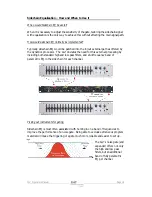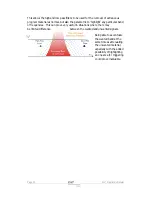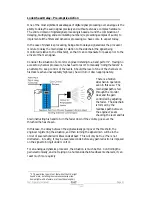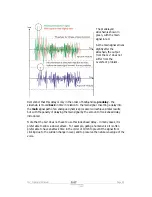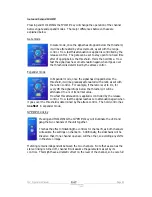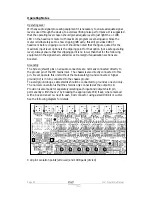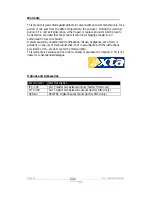
G2
Operators Manual
Page 13
Setting a sympathetic attack time that is similar to that of the required signal will
produce the most natural and transparent results. As the diagram below
demonstrates, the gate opens at a similar rate to the signal, allowing the full attack
portion to be heard.
The same rule applies to the
release of the gate – but for
slightly different reasons.
Too slow a release, and
some of the background
noise will be heard as the
gate closes; too fast, and the
signal will be prematurely
cut off, sounding unnatural.
Setting the Range Correctly.
The range control sets how much attenuation is applied to a signal once it drops
below the threshold and closes the gate. It is quite often overlooked when setting up
a gate, the temptation being to set the range at maximum and leave it. When the
gate is fully closed, no signal will be heard when the range is set like this. In some
situations, this much attenuation can sound quite unnatural, especially if the threshold
is set high to gate a loud signal, due to the stark contrast between the gate fully closed
and fully open.
It’s also worth remembering that if the background noise is quite severe, removing it
all will only highlight the noise more when the gate opens and the noise becomes
apparent again. It’s often better to set the range to around 25-30dB of attenuation so
that it can still be heard very slightly.
Using the Hold Time.
When the gate is being used with transient signals that require fast attack but
relatively slow decays, it can be beneficial to introduce a hold time into the gates
envelope. This has the effect of prolonging the time the gate stays open, after the
signal drops below the threshold. The diagram overleaf explains this concept.
Summary of Contents for G2
Page 1: ......



















